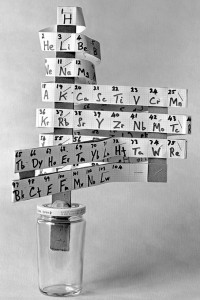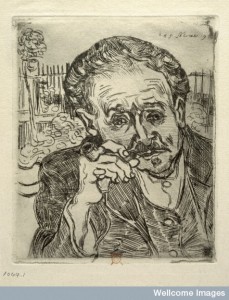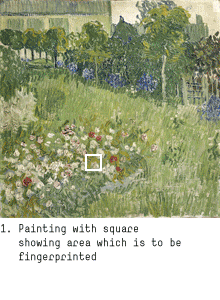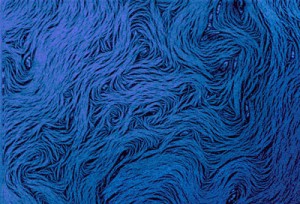There are more comments about Canada’s 2010 federal budget on the Canadian Science Policy Centre website along with listings of relevant news articles which they update regularly. There’s also a federal budget topic in the forums section but it doesn’t seem have attracted much commentary yet.
The folks at The Black Hole blog offer some pointed commentary with regard to the budget’s treatment of post doctorate graduates. If I understand the comments correctly, the budget has clarified the matter of taxation, i. e., post doctoral grants are taxable income, which means that people who were getting a break on taxes are now losing part of their income. The government has also created a new class of $70,000 post doctoral grants but this will account for only 140 fellowships. With some 6000 post doctoral fellows this means only 2% of the current pool of applicants will receive these awards. Do read The Black Hole post as they clarify what this means in very practical terms.
There’s been another discussion outcome from the 2010 budget, a renewed interest in innovation. I’m kicking off my ‘innovation curation efforts’ with this from an editorial piece by Carol Goar in the Toronto Star,
Five Canadian finance ministers have tried to crack the productivity puzzle. All failed. Now Jim Flaherty is taking a stab at it.
Here is the conundrum: We don’t use our brainpower to create new wealth. We have a highly educated population, generous tax incentives for research and development and lower corporate tax rates than any leading economic power. Yet our businesses remain reluctant to invest in new products and technologies (with a few honourable exceptions such as Research in Motion, Bombardier and Magna). They don’t even capitalize on the exciting discoveries made in our universities and government laboratories.
…
Economists are starting to ask what’s wrong. Canada ranked 14th in business spending on research and development – behind all the world’s leading industrial powers and even smaller nations such as Belgium and Ireland – in the latest statistical roundup by the Organization for Economic Cooperation and Development.
I believe she’s referring to the 2009 OECD scorecard in that last bit (you can find the Canada highlights here).
There are many parts to this puzzle about why Canadians and their companies are not innovative. Getting back to Goar’s piece,
Kevin Lynch, who served as Stephen Harper’s top adviser from 2006 to 2009 [and is now the vice-chair of the Bank of Montreal Financial Group], has just written an article in Policy Options, an influential magazine, laying the blame squarely on corporate Canada. He argues that, unless business leaders do their part, it makes little sense to go on spending billions of dollars on research and development. “In an era of fiscal constraint, there has to be a compelling narrative to justify new public investments when other areas are being constrained,” he says.
Here’s a possible puzzle piece, in yesterday’s (March 15, 2010) posting I noted a study by academic, Mary J. Benner, where she pointed out that securities analysts do not reward/encourage established US companies such as Polaroid (now defunct) and Kodak to adopt new technologies. I would imagine that the same situation exists here in Canada.
For another puzzle piece: I’ve made mention of the mentality that a lot of entrepreneurs (especially in Canadian high tech) have and see confirmation in a Globe and Mail article by Simon Avery about the continuing impact of the 2000 dot com meltdown where he investigates some of the issues with venture capital and investment as well as this,
“It’s a little bit about getting into the culture of winning, like the Olympics we just had,” says Ungad Chadda, senior vice-president of the Toronto Stock Exchange. “I don’t think the technology entrepreneurs around here are encouraged and supported to think beyond the $250-million cheque that a U.S. company can give them.”
One last comment from Kevin Lynch (mentioned in the second of the Goar excerpts) about innovation and Canada from his recent opinion piece in the Globe and Mail,
A broader public dialogue is essential. We need to make the question “What would it take for Canada to be an innovative economy for the 21st century?” part of our public narrative – partly because our innovation deficit is a threat to our competitiveness and living standards, and partly because we can be a world leader in innovation. We should aspire to be a nation of innovators. We should rebrand Canada as technologically savvy, entrepreneurial and creative.
Yes, Mr. Lynch a broader dialogue would be delightful but there does seem to be an extraordinary indifference to the notion from many quarters. Do I seem jaundiced? Well, maybe that’s because I’ve been trying to get some interest in having a Canadian science policy debate and not getting very far with it. In principle, people call for more dialogue but that requires some effort to organize and a willingness to actually participate.
(As for “rebranding”, is anyone else tired of hearing that word or its cousin branding?)
On a completely other note, the University of Ottawa has announced that it is supporting open access to its faculty’s papers with institutional funding. From the news release,
According to Leslie Weir, U of Ottawa’s chief librarian, the program encompasses several elements, including a new Open Access (or OA) repository for peer-reviewed papers and other “learning objects”; an “author fund” for U of Ottawa researchers to help them cover open-access fees charged by journal publishers; a $50,000-a-year budget to digitize course materials and make them available to anyone through the repository; and support for the University of Ottawa Press’s OA journals.
…
But the university stopped short of requiring faculty members to deposit their papers with the new repository. “We all agreed that incentives and encouragement was the best way to go,” said Ms. Weir, who worked on the program with an internal group of backers, including Michael Geist, professor of intellectual property law, and Claire Kendall, a professor in the faculty of medicine who has been active in OA medical journals.
There is some criticism of the decision to make the programme voluntary. Having noticed the lack of success that voluntary reporting of nanomaterials has had, I’m inclined to agree with the critics. (Thanks to Pasco Phronesis for pointing me to the item.)
If you’ve ever been interested in art restoration (how do they clean and return the colours of an old painting to its original hues?, then the Van Gogh blog is for you. A member of the restoration team is blogging each step of The Bedroom’s (a famous Van Gogh painting) restoration. I was a little surprised that they don’t seem to be using any of the new nano-enabled techniques for examining the painting or doing the restoration work.
Given the name for this website, I have to mention the work done with frogs in pursuit of developing new biofuels by scientists at the University of Cincinnati. From the news item on Nanotechnology Now,
In natural photosynthesis, plants take in solar energy and carbon dioxide and then convert it to oxygen and sugars. The oxygen is released to the air and the sugars are dispersed throughout the plant — like that sweet corn we look for in the summer. Unfortunately, the allocation of light energy into products we use is not as efficient as we would like. Now engineering researchers at the University of Cincinnati are doing something about that.
The researchers are finding ways to take energy from the sun and carbon from the air to create new forms of biofuels, thanks to a semi-tropical frog species [Tungara frog].
…
Their work focused on making a new artificial photosynthetic material which uses plant, bacterial, frog and fungal enzymes, trapped within a foam housing, to produce sugars from sunlight and carbon dioxide.
Here’s an illustration of the frog by Megan Gundrum, 5th year DAAP student (I tried find out what DAAP stands for but was unsuccessful, ETA: Mar.31.10, it is the Design, art, and architecture program at the University of Cincinnati),
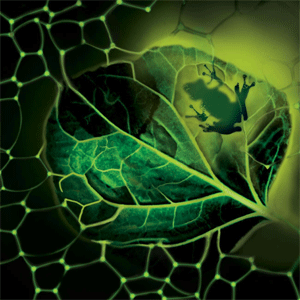
illustration by Megan Gundrum, 5th year DAAP student
Thank you to the University of Cincinnati for making the image available.
